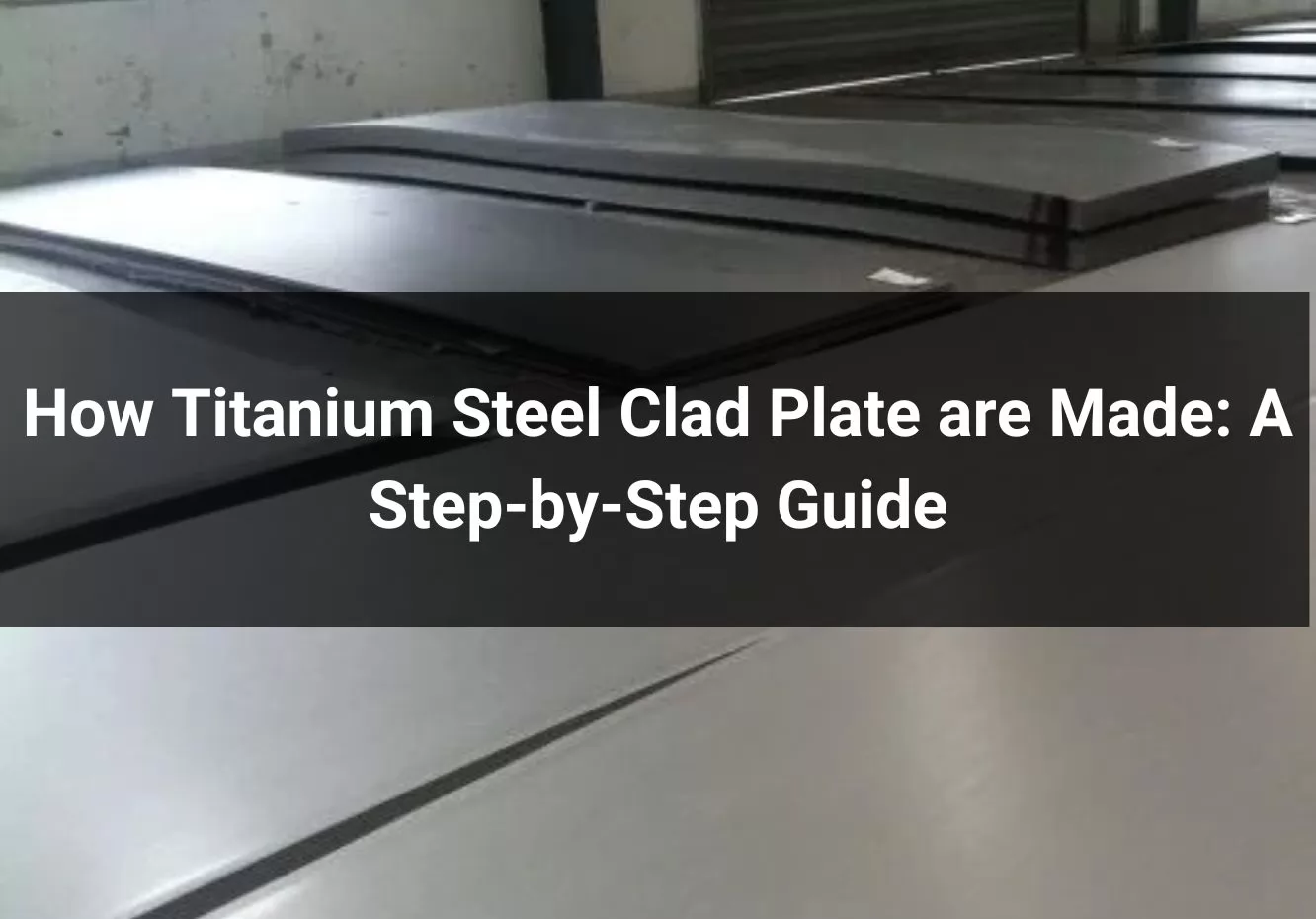


Titanium steel clad plates combine the strength of steel with the corrosion resistance of titanium to create a versatile material that is used in a wide range of industries including chemical processing, power generation and offshore engineering.
The manufacturing process is precise and technical to ensure that the bond between titanium and steel is strong and durable. This blog will walk you through the manufacturing process of titanium steel clad plates step by step.
The process first requires the careful selection and preparation of titanium and steel plates, which constitute the base and cladding of the titanium-steel composite plate, respectively.
●Steel Plate: Acts as the base layer, providing robust strength and structural integrity. It ensures the clad plate can withstand high mechanical stress and heavy loads, making it suitable for demanding applications like chemical processing, shipbuilding, and aerospace.
●Titanium Plate: Functions as the cladding layer, offering unparalleled corrosion resistance, lightweight properties, and biocompatibility. These characteristics make titanium steel clad plates indispensable in environments like seawater desalination plants, medical equipment manufacturing, and oil refineries.
Inspection and Cleaning: Both plates undergo stringent inspections to detect any surface defects. Cleaning removes impurities such as dirt, grease, and oxides, ensuring the materials are in optimal condition for bonding. This meticulous preparation is critical for achieving a strong and reliable bond in the titanium steel clad plate.
Explosive welding is the core technique for bonding titanium and steel, forming the foundation of the titanium steel clad plate. This innovative process creates a metallurgical bond that maintains the unique properties of both metals.
●Stacking: The titanium plate is carefully placed above the steel plate, with a controlled gap between them. Spacers are used to ensure uniform spacing, which is crucial for achieving a consistent bond.
●Explosive Application: A precisely measured layer of explosives is evenly distributed on the surface of the titanium plate.
●Detonation: The explosives are detonated, propelling the titanium plate toward the steel plate at supersonic speeds. The impact generates extreme pressure and localized heat, causing the two materials to bond at a molecular level.
The result is atitanium steel clad platewith a robust bond that preserves the individual strengths of titanium and steel. This process is particularly advantageous for producing large, high-performance plates suitable for critical applications.
Post-welding, thetitanium steel clad platesundergo heat treatment to enhance their bonding strength and mechanical properties.
●Stress Relief: Heat treatment eliminates residual stress caused by the explosive welding process, ensuring dimensional stability.
●Property Enhancement: This step refines the metallurgical structure, improving the plate's uniformity and mechanical performance.
The parameters of the heat treatment process, such as temperature and duration, are tailored to the specific composition and intended use of the titanium steel clad plate.
To achieve the desired flatness and precise dimensions, the bonded titanium steel clad plates undergo a flattening process.
●Mechanical Flattening: The plate is then passed through a series of rollers or flattening machines that apply pressure to correct any warping, bending, or surface irregularities. This step ensures the plate achieves the required flatness and dimensional accuracy.
Flattening ensures that the titanium steel clad plate meets rigorous industry standards and is suitable for various applications, including heat exchangers, pressure vessels, and other high-performance systems.
Quality assurance is critical in the production of titanium steel clad plates to ensure reliability and safety in demanding environments.
●Ultrasonic Testing: Detects internal defects or voids within the bond layer, ensuring structural integrity.
●Mechanical Testing: Evaluates the plate's strength, flexibility, and resistance to mechanical stress.
●Corrosion Testing: Verifies the performance of the titanium layer in harsh and corrosive environments.
These inspections guarantee that each titanium steel clad plate meets industry certifications and customer expectations.
The surface of the titanium steel clad plateis treated or polished to meet application-specific requirements. Common surface treatments include:
●Polishing: Ensures a smooth, reflective finish.
●Sandblasting: Prepares the plate for further processing, such as welding or coating.
●Coating: Enhances the plate's durability or provides additional resistance to specific environmental factors.
The finished titanium steel clad plates are cut and shaped according to customer specifications. Advanced cutting technologies are used to ensure precision and maintain the integrity of the bonded layers:
●Plasma Cutting: Suitable for high-speed, accurate cutting of complex shapes.
●Water Jet Cutting: A non-thermal method that prevents damage to the bond layer.
This step customizes the titanium steel clad plate for its intended application, whether in industrial machinery, architectural projects, orpressureequipment.
To ensure safe transportation, the titanium steel clad plates are packaged meticulously. Protective materials are used to prevent damage, and each plate is labeled with detailed specifications, including dimensions, material composition, and test results.
Due to their unique properties, titanium steel clad plates can be used in a variety of industries:
Chemical Processing: For storage tanks and reactors exposed to corrosive chemicals.
Power Generation: For condensers and heat exchangers in thermal power plants.
Marine Engineering: For shipbuilding and offshore platforms, which must be resistant to seawater.
Metallurgical Engineering: For equipment such as smelting furnaces and reactors that require materials resistant to high temperatures and corrosive environments.
The production of titanium steel clad plates is a meticulous process that combines innovative technology with precision engineering. From material preparation to finishing, every step ensures that the final product is durable, corrosion-resistant, and can meet the demands of challenging environments. These versatile composite plates play a vital role in industries where performance and reliability cannot be compromised.
Read More:
Comparison of Mechanical Properties for Titanium-Steel Clad Plates - FUGO Tech
Nickel Clad Plate & Titanium Clad Plate in Flue Gas Desulfurization Systems - FUGO Tech
Applications of Zirconium-Steel Clad Plate - FUGO Tech
[Material info] Applications of Titanium Clad Plates - FUGO Tech
Elements of Butt Welding of Titanium Steel Clad Plates - FUGO Tech
What is a Titanium Steel Clad Plate and How Is It Used? - FUGO Tech



Fugo Tech is focused on the manufacturing of clad metal plate and distributes the Stainless Steel, Titanium, Nickel Alloy, Zirconium and other non-ferrous metal pipes, fittings, flanges, and fasteners.